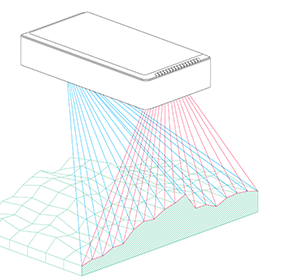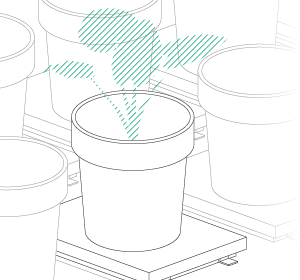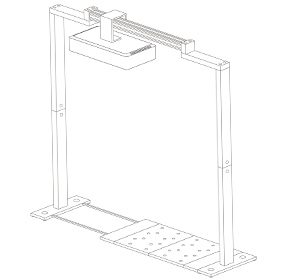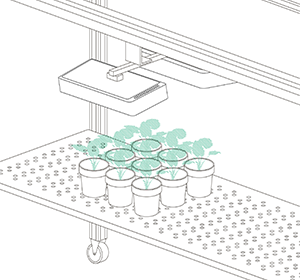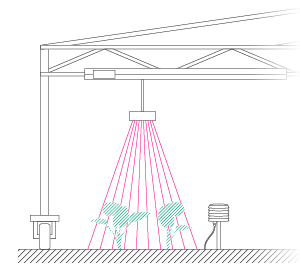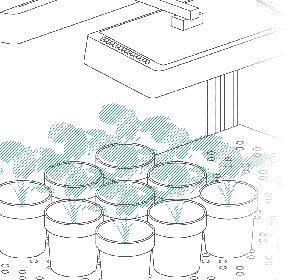Plant Phenotyping in the Americas, One Year Later
Approximately a year ago, I entered the plant phenotyping arena and in my first blog for our company posed the following question.
“Will the US overtake Europe in Advanced Plant Phenotyping?”
Admittedly, the question was too narrowly focused and I should have viewed this from a more hemispheric perspective, meaning North and South America, particularly since the efforts in Europe to date have been multi-national. As I began to summarize my experience over the last year, I started to think about other transitional periods in plant breeding. A quick search of the web produced the following statement regarding the work of Norman Borlaug:
“[His] greatest achievement has been his unending struggle to integrate the various streams of agricultural research into viable technologies and to convince political leaders to bring these advances to fruition.”
In the context of plant phenotyping, this statement only partially summarizes the task faced by the discipline today. At the first symposium I attended, it was apparent to everyone that this endeavor will necessitate a multi-disciplinary approach, which not only includes “various streams of agricultural research”, but mathematics, computer science, big data analytics, physics, engineering, business process improvement, software development, project management and other disciplines.
The second half of the statement regarding attaining “buy-in” from political leadership has been demonstrated in the development of various network organizations as well as the increased number of dedicated funding efforts.
These include, but are not limited to:
- North American Plant Phenotyping Network (NAPPN): Creating the organizational structure in North America and identify potential research thrusts
- Latin-American Plant Phenomics Network (LatPPN): Creating organizational structure in Latin America and strengthen research capabilities in the field of plant phenotyping and phenomics
- The Foundation for Food and Agriculture Research (FAR): Developing partnerships to support innovative science addressing today’s food and agriculture challenges
- ARPA-e: Facilitating improvement of advanced biofuel crops, specifically energy sorghum, by developing and integrating cutting-edge remote sensing platforms, complex data analytics tools, and high-throughput plant breeding technologies
- Genome2Fields: Catalyzing and coordinating research linking genomics and predictive phenomics to achieve advances that generate societal and environmental benefits
- Global Institute for Food Security: Helping to feed the world through transformative innovations in agriculture and food production
- GenomePrairie: Capturing and maximizing the benefits of advanced research in genomics and related biosciences
There have been many changes on the industry side of the equation with corporate consolidation, mergers and relocation of staff, but it seems to have stabilized somewhat. Private\Public partnerships will continue however to be important in the development of more robust technologies as industry was one of the early adopters of phenotyping technology.
During the last year, I was afforded opportunities to visit some of the most prestigious plant breeding research institutions in the United States and will also travel to CIMMYT in El Batan, Mexico in December for the “4th International Plant Phenotyping Symposium”.
There is no better place to finish out my first year in the phenotyping world than CIMMYT. To walk in the same fields and mingle with the inheritors of Norman Borlaug’s noble efforts, people who are striving “to bring these advances to fruition” will be truly be rewarding.
The next year will continue to be challenging as the organizational structure will be refined and the various work streams within the industry will see advances from improved sensor development, more advanced algorithms and data processing, phenotypic data standards, data management and data visualization tools. Each of these efforts can experience continuous development independently while being connected to the overall phenotyping pipeline with the goal of creating meaningful and useful knowledge.
Continued collaboration and cooperative efforts between universities, non-profit research organizations and industry can only further the progress made to date.
From the outset, PHENOSPEX has leveraged diverse perspectives and backgrounds in the creation of advance tools, software and processes in order to create “viable technologies” for advanced plant analysis and is well positioned to work jointly with plant researchers.
Reference:

